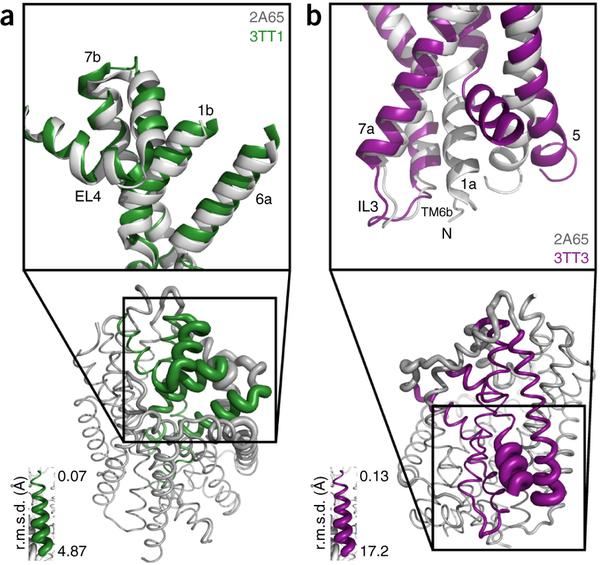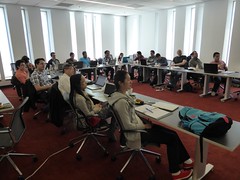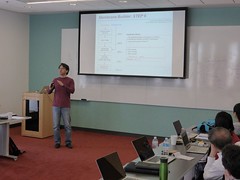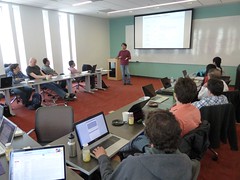This week, the Transport Cycle in Neurotransmitter Uptake Systems bridging project of the Membrane Protein Structural Dynamics Consortium (MPSDC) published an important article in Nature Structural & Molecular Biology on the bacterial leucine transporter (LeuT), a transporter which is structurally and functionally similar to neurotransmitter transporter proteins that direct neurotransmitters from synapse and terminal nerve signaling. The publication, titled “Conformational dynamics of ligand-dependent alternating access in LeuT,” was spearheaded by Vanderbilt graduate student Kelli Kazmier and Professor of Molecular Physiciology & Biophysics Hassane Mchaourab, and also featured collaboration by Consortium colleagues Jonathan Javitch, Harel Weinstein, and Benoît Roux.
The Transport Cycle in Neurotransmitter Uptake Systems project explores the conformational changes and dynamic properties relevant to function in Neurotransmitter transporters translocation cycle using a combination of computational, functional, and spectroscopic approaches. Using the recently determined crystal structure of a prokaryotic leucine transporter (LeuT), the scientists collaborating in this project are modeling the transport mechanisms of these proteins.
In this study, Mchaourab and colleagues used spectroscopic tools to make dynamic measurements in LeuT, in order to elucidate sodium- and leucine-dependent conformational This work highlights the importance of assessing the mechanistic identity of crystal structures, demonstrates the importance of dynamics in understanding function and realizes the vision of the consortium in integrating teams of scientists towards defining mechanistic principles of membrane proteins.changes in the transporter. The results identify the structural motifs that underlie the shift of LeuT between its various states – outward-facing, inward-facing and occluded. The conformational changes reported present a dynamic picture of the alternating-access mechanism of LeuT and NSSs that is different from the inferences reached from currently available structural models.
The publication marks a significant advance for the project’s research objectives, and is demonstrative of the cutting-edge collaborations between experimentalists and computationalists within the Consortium. According to Mchaourab, this work “highlights the importance of assessing the mechanistic identity of crystal structures, demonstrates the importance of dynamics in understanding function and realizes the vision of the consortium in integrating teams of scientists towards defining mechanistic principles of membrane proteins.”
The publication was also featured in Research News @ Vanderbilt. Click to read »








